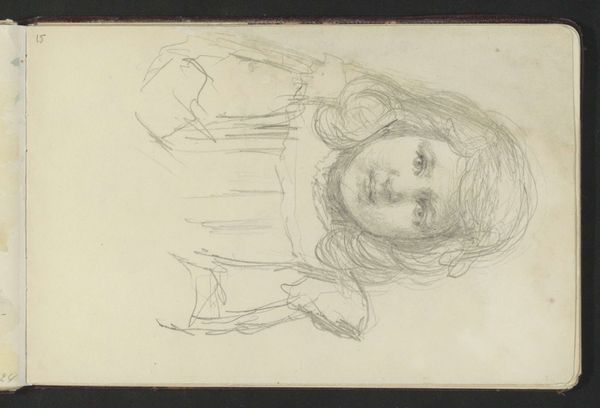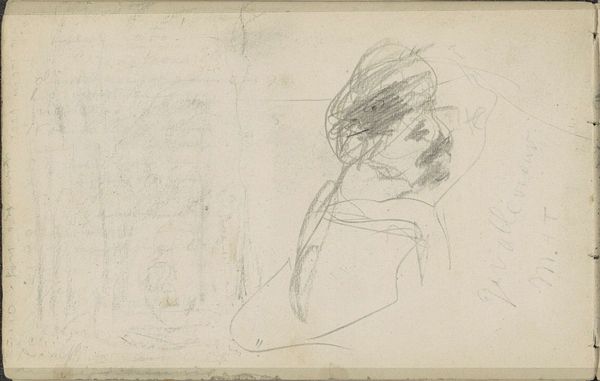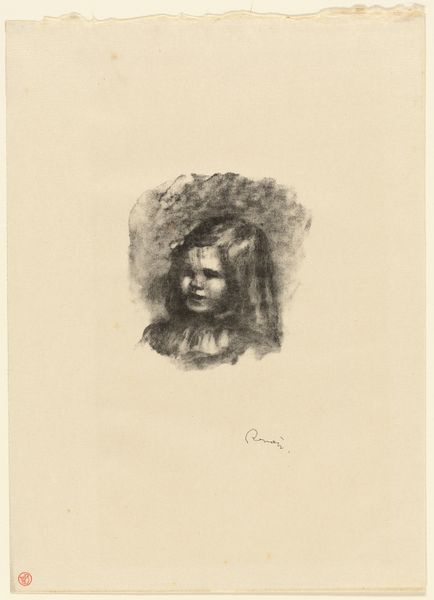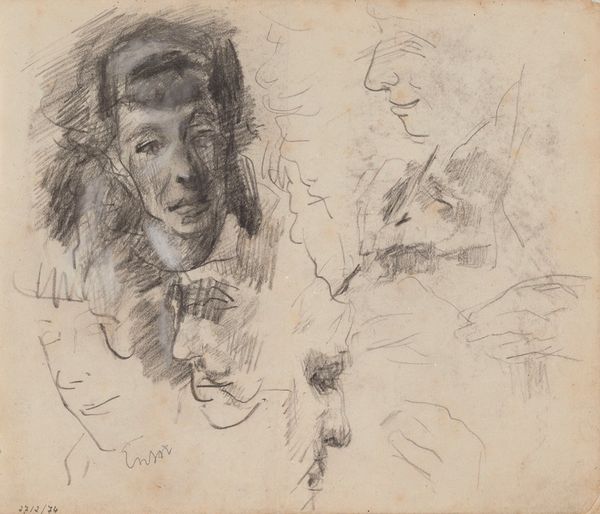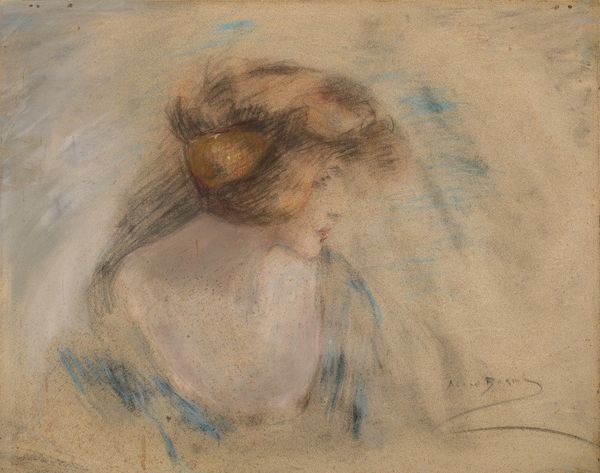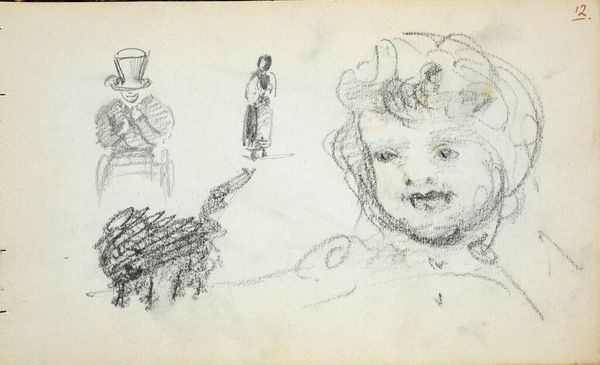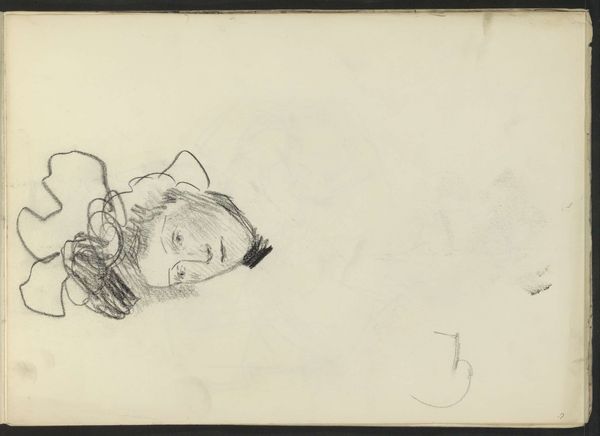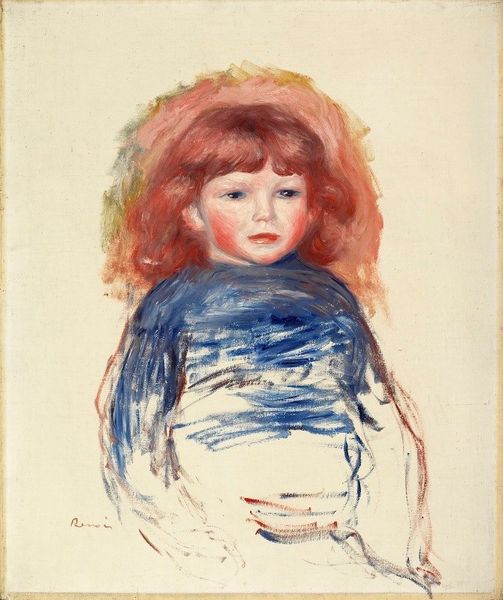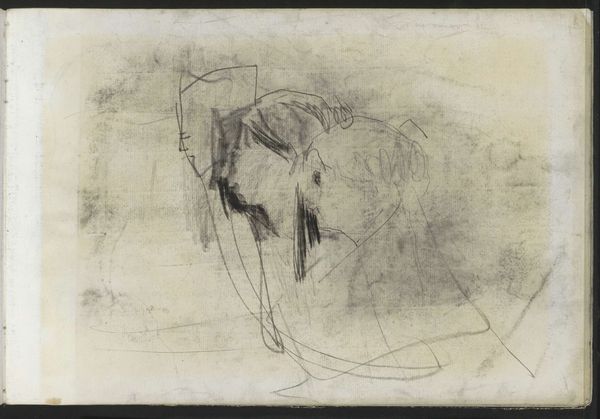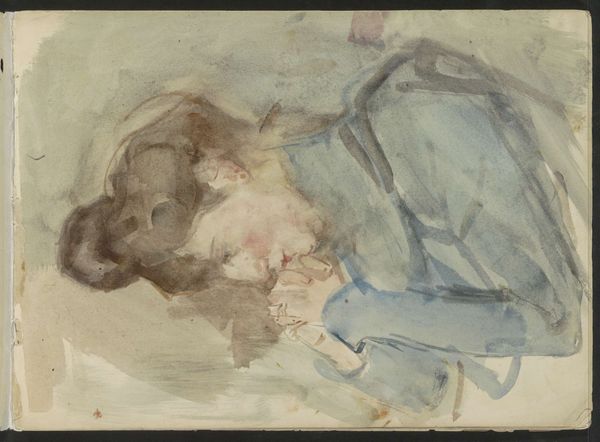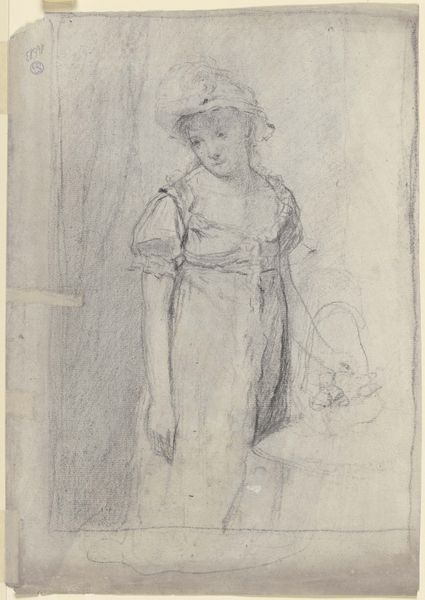
drawing, coloured-pencil, paper, pencil, pastel
#
portrait
#
drawing
#
coloured-pencil
#
impressionism
#
charcoal drawing
#
paper
#
pastel chalk drawing
#
pencil
#
painting painterly
#
pastel
Copyright: Public Domain: Artvee
Curator: This is "The Artist’s Son Georges" by Camille Pissarro, likely dating around 1880. It’s a coloured-pencil drawing on paper. Editor: There's a softness to this work that is really arresting. The visible strokes create a beautiful texture and imbue this boy, George, with this ephemeral almost dreamlike quality. Curator: It speaks to the intimacy achievable within family portraits. Pissarro often depicted his family members, embedding them within the narrative of Impressionism itself. It underscores Impressionism's departure from the grandiose and its turn toward domestic scenes. Editor: The economy of line is interesting to me here as well. I'm struck by the visible under drawing on the left-hand side and how unfinished the entire work feels, but perhaps this incompleteness contributes to the work’s overall tenderness. What do you make of the rosy hues of Georges’ cheeks? Curator: It's that subtle colouring which points toward his connection to the wider Impressionist project and their examination of light and atmosphere. These were ordinary people elevated through close artistic attention. His red cheeks suggest outdoor play and freshness. These small details speak volumes about the middle-class values gaining visibility at the time. Editor: Indeed, it’s remarkable how few lines delineate the subject's facial structure, and how with such constrained execution, he achieved an almost photorealistic capturing. Pissarro understood the language of suggestion. It lends an intriguing element, as the viewer becomes a participant filling in the work. Curator: His style definitely contrasts sharply with traditional portraiture’s commission for powerful figures, Pissarro painted who he had immediate access to, embedding his artistic practice within his family dynamic and blurring these traditionally conceived dichotomies between private and public, labor and intimacy. Editor: I agree, it almost feels like a private snapshot, but one composed by a master, creating an intimacy only drawing could evoke. I appreciate you putting Pissarro in historical context for us, illuminating the social dynamic which underscores his art, it does enhance our reception. Curator: Thank you. Analyzing art through this perspective not only provides a context to this work, but allows a deep understanding of Pissarro as an agent who shaped modern ideas about art and life. Editor: Understanding Pissarro's command over composition, form, and subtle color shifts, as seen here, really enriches our overall visual literacy. The sensitivity of his drawing reminds us that, regardless of social context, technique allows access to new modes of feeling.
Comments
No comments
Be the first to comment and join the conversation on the ultimate creative platform.
